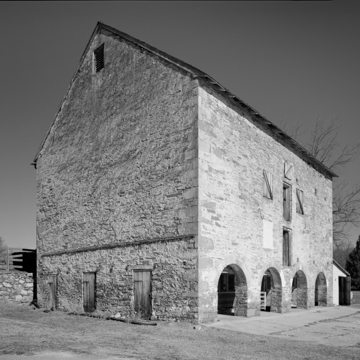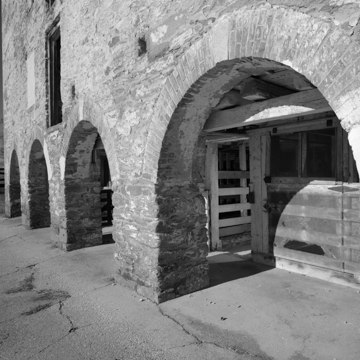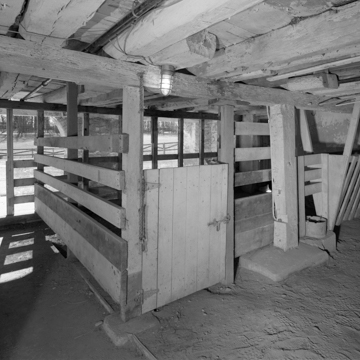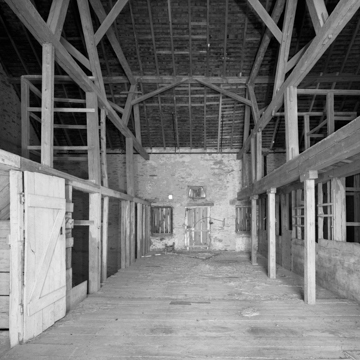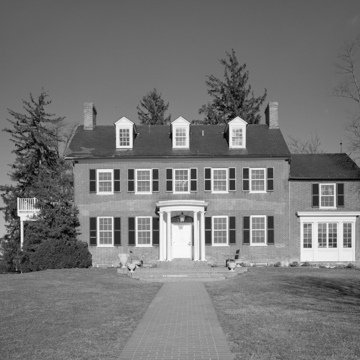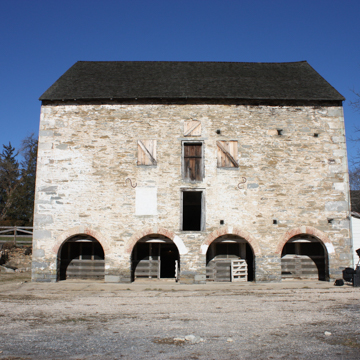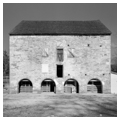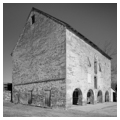Built by local stonemason Isaac Holland for physician and farmer William Pennell Palmer, the barn is among the most substantial and well-appointed agricultural buildings in the county. It was erected in the tradition of the Pennsylvania barn, which enjoyed a heyday between 1790 and 1840, spreading to neighboring states and eventually diffusing westward. Now a ubiquitous part of the nation’s agricultural landscape, it resulted from the consolidation of earlier assemblages of smaller outbuildings into one large multifunctional structure; Woodlawn Barn includes livestock stabling, threshing floor, hay storage, granary, corn crib, and root cellar under one roof. It is banked into the hillside to provide direct access to stabling from the lower side and to the threshing floor from the upper side. Woodlawn is of the less typical three-story, stone-arched, forebay type introduced by the Quaker farmers of Chester County, Pennsylvania, from which Palmer, also a Quaker, originated.
The barn is a manifestation of the rise in scientific approaches to agriculture instituted by Sandy Spring farmers. As a member of the Enterprise Farmer’s Club, Palmer was among those who adopted innovations such as the use of guano, lime, and plaster fertilizers, crop rotation, and grain production. The barn now features interpretative exhibits that tell the story of Sandy Spring’s local agricultural practices, its Quaker and free Black communities, and their involvement in the Underground Railroad.
References
Ensminger, Robert F. The Pennsylvania Barn; Its Origin, Evolution, and Distribution in North America, 2nd ed. Baltimore: John Hopkins University Press, 1992.
Lavoie, Catherine C. “Woodlawn, Barn,” Historic American Buildings Survey, National Park Service, HABS No. MD-578-A, 2013.
Vlach, John Michael. Barns. Norton/Library of Congress Visual Sourcebooks in Architecture, Design, and Engineering. New York: W.W. Norton & Company, 2003.










